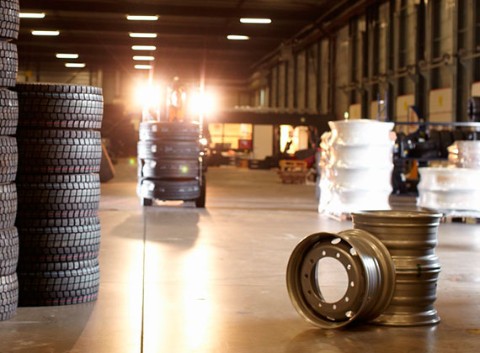The ability of the wheel to rotate freely: the ET-value
Wheel construction
Determining the ET-value is related to the technology, the structure of the truck wheel. This usually consists of two components: the rim (around which the tyre sits) and the dish or disc (which provides the connection between the rim and the hub). The wheel is attached to the hub, and therefore to the vehicle, by wheel nuts or wheel studs via the dish (disc). The position of the dish or disc in relation to the wheel bearing forms the basis for the ET-value. This is given in millimetres and is therefore in fact a distance indicator.
Position above the wheel bearing
In order to determine the ET-value of the wheel, we therefore look at the cross-section of the wheel. If the dish is attached in the centre of the rim, this is referred to as an ET0 (in millimetres). In this case there is an equal amount of space on the inside and the outside. The ET (offset) is equal to the distance between the wheel bearing and the attachment position.
Because vehicle and wheel manufacturers also target the minimum possible wear, the wheel must be centred as well as possible above the wheel bearing. It is also important for the wheel to be able to be attached so that the wheel can rotate freely, without resistance, for example from the brake discs and/or other components.
Rim inner surface
In practice, the ET-value is the number in millimetres that the centre line of the wheel deviates from the mounting surface (on the wheel hub). As a rule of thumb: the higher the ET, the more a wheel is positioned inwards; the lower the ET, the more a wheel protrudes outwards.
The ET-value is usually stated on the inside of the rim, but in any case it is always stated in the list of our range. If you retain the same ET-value as the wheel to be replaced, you’ll be fine.
For example, imagine a wheel’s rating is ET35. If you mount an ET25 wheel, the wheel will stick out 10mm further. This also changes the position in relation to the wheel bearing, which can mean more wear; it may also mean altered steering behaviour because the tread width changes.
Like to know more?
Do you need advice? Please contact us, our experts will be pleased to assist you. Contact our experts at +31 (0)523 - 850 850 or by e-mail to info@heuver.com. You can also read all about trucks on the truck knowledge-page.

